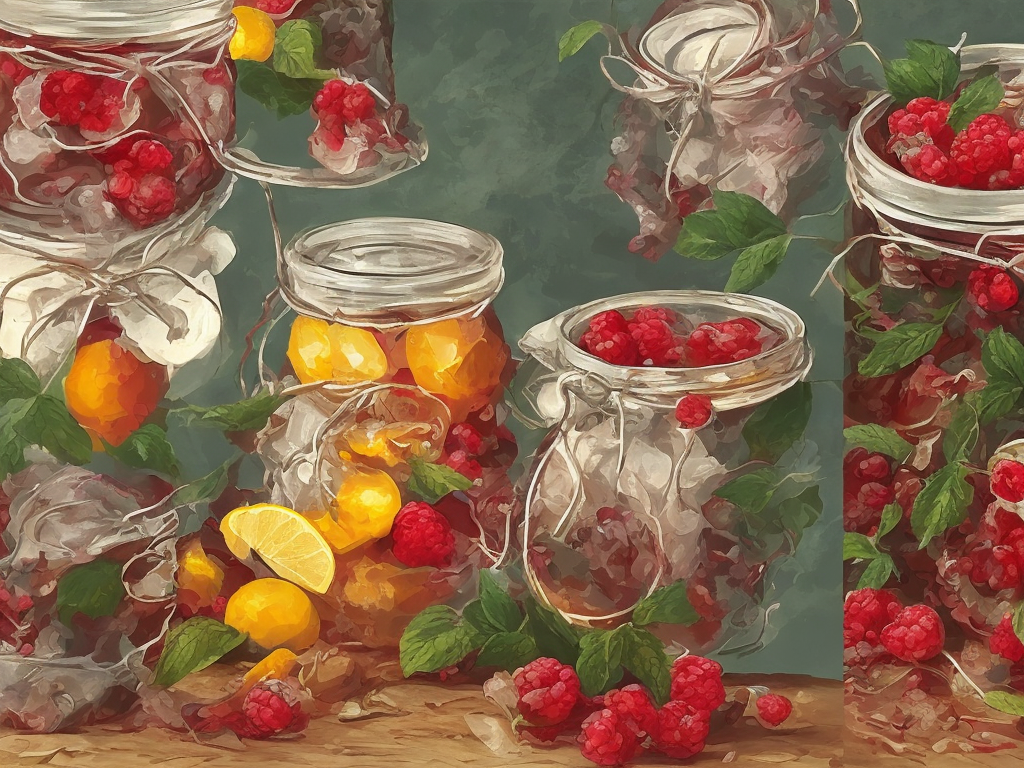
Jam and jelly are two popular spreads that are commonly used on bread, toast, bagels, and pastries. While they may appear to be the same, there are notable differences between the two.
To put it simply, jam is a spread that's made from fruit that still has its pulp and seeds. So, when you eat jam, you can feel the pieces of fruit in your mouth. Jelly, on the other hand, is a spread made from fruit juice that has been filtered to remove any pulp and seeds. As a result, it's smooth and clear.
Now that we have the basic definition of jam and jelly out of the way, let's dive a little deeper into the main differences between the two.
Ingredients
Jam is made typically with fruit, sugar, and pectin, which is a natural thickener. The fruit is usually crushed or chopped into small pieces, mixed with sugar, and simmered until it thickens. Some types of jam can be made without pectin, but the end result will be less firm and may not hold its shape as well.
Jelly, on the other hand, uses only fruit juice, sugar, and pectin. The fruit juice is usually extracted by cooking or crushing the fruit, and then straining it to remove any pulp and seeds. Pectin is then added, and the mixture is boiled until it reaches the desired consistency. Typically, jelly is more firm and less dense than jam.
Texture
Speaking of consistency, the texture is one of the most noticeable differences between jam and jelly. As mentioned before, jam is typically thicker and denser compared to jelly, and it has a slightly grainy texture due to the fruit pieces in it.
Jelly, on the other hand, is smoother and firmer. It spreads easily on bread and doesn't have any chunks or seeds. It's ideal for those who prefer a lighter spread or want to avoid any chunks of fruit in their food.
Flavor
The way that jam and jelly are made can also affect the way that they taste. Since jam contains pieces of fruit, it has a stronger and more complex flavor than jelly. The addition of sugar brings out the natural sweetness of the fruit and makes it more enjoyable to eat.
Jelly, on the other hand, has a lighter and more delicate flavor. By removing the pulp and seeds, the end result is a purer and more refined taste. However, some people might find it to be less flavorful compared to jam.
Varieties
Jam and jelly come in various flavors and can be made from many different fruits depending on the season and availability. Some common types of jam include strawberry, raspberry, blackberry, peach, apricot, and blueberry. Popular jelly flavors include grape, apple, and orange.
Uses
Both jam and jelly can be used for many different purposes, but they are often used in different ways. Jam is great for spreading on toast or bagels, or for using as a filling in pastries or cakes. It can also be used as a glaze or marinade for meat, or as a topping for yogurt or ice cream.
In comparison, jelly is commonly used for making sandwiches, such as peanut butter and jelly, or for adding to oatmeal or yogurt for extra flavor. It can also be used as a topping for pancakes or waffles or as a filling in a variety of desserts.
Conclusion
In the end, the difference between jam and jelly lies mainly in the texture, ingredients, and taste. Jam is denser and has a more complex flavor due to the fruit pieces, while jelly is smoother and has a lighter and more refined taste. Regardless of which one you choose, both jam and jelly are delicious spreads that can add a touch of sweetness to your morning toast or afternoon snack.
 Self-Instruct
Self-Instruct